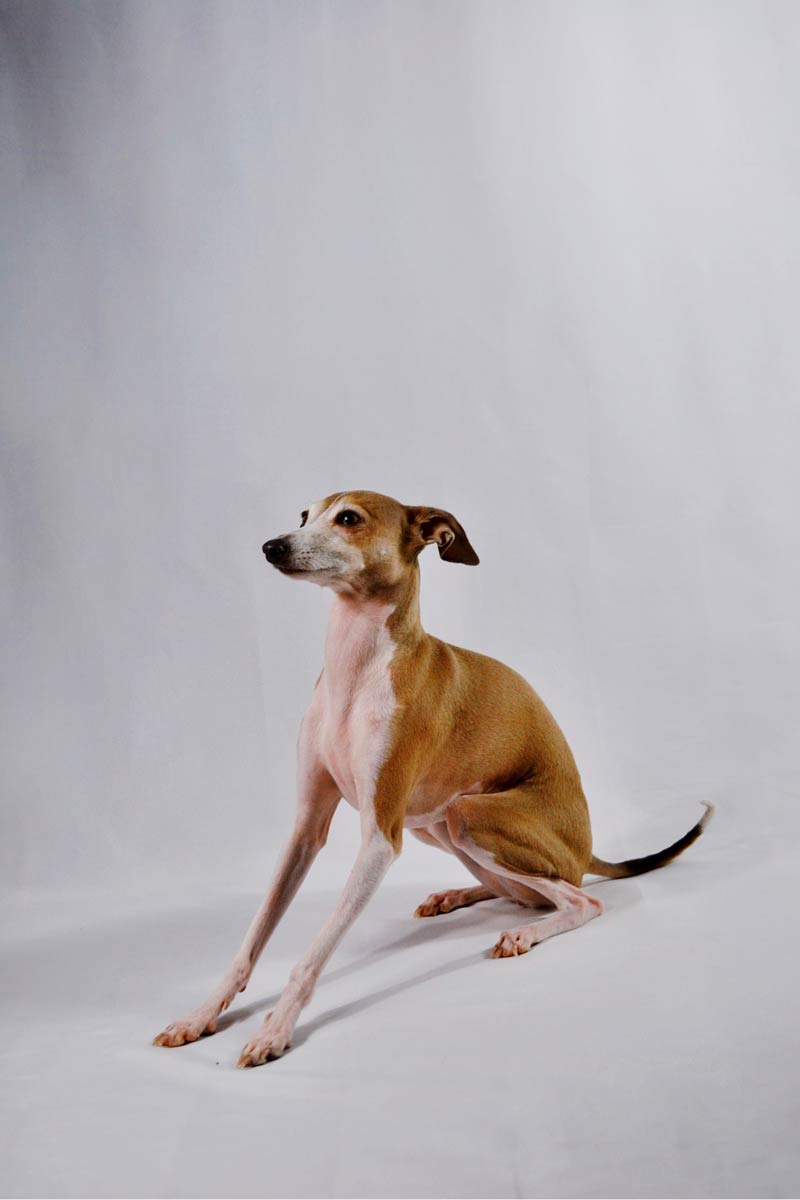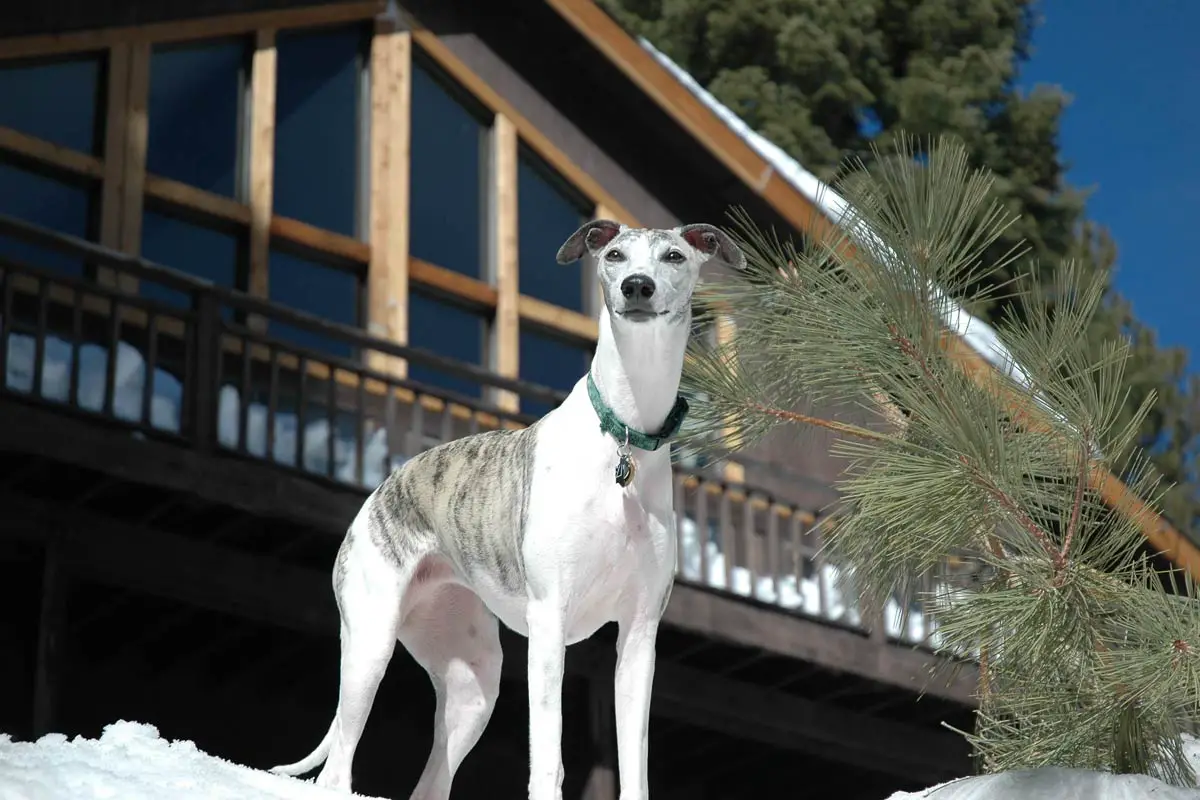Greyhounds are one of the oldest and fastest dog breeds in the world, originating from ancient Egypt.
They are known for their sleek, muscular bodies and long legs, which allow them to run at astonishing speeds.
They are also gentle, intelligent, and loyal dogs that make great companions.
In this article, we will delve into the main characteristics of the Greyhound breed and provide a comprehensive care guide for potential owners.
Whether you are considering adopting or buying a Greyhound, understanding their unique traits and requirements is essential to ensure their well-being and happiness.
1. Greyhound Dog Breed Overview
The English Greyhound, or simply the Greyhound, is a breed of dog, a sighthound that has been bred for coursing, greyhound racing, and hunting. Since the rise in the large-scale adoption of retired racing Greyhounds, the breed has seen a resurgence in popularity as a family pet.
Greyhounds are defined as tall, muscular, smooth-coated, “S-shaped” type of sighthounds with long tails and tough feet.
The Greyhound is a gentle and intelligent breed whose combination of long, powerful legs, deep chest, flexible spine, and slim build allows it to reach average race speeds exceeding 64 kilometers per hour (40 mph).
| Items | Detail |
|---|---|
| Origin: | Egypt |
| Size: | The Greyhound is a tall and slender dog with a sleek, muscular build. – Weighs: 60 to 80 pounds – Height: 26 to 30 inches |
| Coat: | Short, smooth coats come in a variety of colors, including black, white, fawn, and brindle. |
| Life span: | 10 to 13 years |
| Main characteristics: | Even-tempered, intelligent, affectionate, athletic, quiet, and gentle. |
| Suitable for: | – Excellent racing & hunting dogs with incredible speed and agility. – Great companion with family with affectionate and loyal personalities. |
Read more: Greyhound – Wikipedia

2. Care Guide
Health
Greyhounds are generally healthy and long-lived breeds and hereditary illness is rare, but it’s important to be aware of potential health issues.
They may be prone to conditions such as Gastric Dilatation-Volvulus; Hip Dysplasia; Osteosarcoma; Hypothyroidism.
Gastric Dilatation-Volvulus (GDV or bloat): occurs when the stomach fills with gas and twists, causing a blockage in the blood flow. This condition is life-threatening and requires immediate veterinary attention.
Symptoms include a distended abdomen, restlessness, unproductive vomiting, and difficulty breathing.
Hip dysplasia: can cause pain, lameness, and difficulty in mobility. While genetics play a significant role, factors such as rapid growth, obesity, and improper nutrition can contribute to the severity of the condition.
Osteosarcoma: an aggressive and malignant bone tumor that primarily affects large. It usually occurs in the limbs and can cause lameness, swelling, and pain.
This disease is typically treated with a combination of surgery, chemotherapy, and pain management.
Providing a safe and comfortable environment, regular exercise, and a balanced diet are key factors in maintaining their overall well-being.
Regular check-ups with a veterinarian and maintaining a healthy weight are crucial for their overall well-being.
Nutrition & Diet
A well-balanced diet is essential for the health of your Greyhound.
Choose a high-quality dog food that is appropriate for their age, size, and activity level.
Consult with your veterinarian to determine the correct portion sizes and feeding schedule.
Greyhounds have a lean body structure, so it’s important to monitor their weight and adjust their diet accordingly.
Avoid overfeeding to prevent obesity, which can lead to various health problems.
Additionally, make sure your Greyhound has access to fresh, clean water at all times.
Grooming
Greyhounds have short, smooth coat that requires minimal grooming.
Brushing them once a week helps to remove loose hair and keep their coat in good condition.
Due to their thin skin, be gentle when grooming to avoid causing any discomfort or injury.
Regular dental care, including brushing their teeth and providing dental treats, helps maintain good oral hygiene.
Trim their nails regularly to prevent them from becoming too long and causing discomfort.
Cleaning their ears on a regular basis helps prevent infections.
Lastly, ensure they are protected from extreme weather conditions, as their short coat provides limited insulation.
Related: Dog Grooming: How to Groom Dog at Home
Training & Exercises
Training and exercise are important aspects of caring for a Greyhound.
They are intelligent dogs that respond well to positive reinforcement training methods.
Early socialization is crucial to ensure they are comfortable and well-behaved around people, animals, and different environments.
Greyhounds have a strong prey drive, so it’s important to teach them recall and proper leash manners.
Engage them in regular exercise to keep them physically and mentally stimulated.
Although they are known for their incredible speed, they also enjoy lounging around and relaxing. Daily walks and the opportunity to stretch their legs in a secure, enclosed area are necessary to meet their exercise needs.
Related: How to Training a Dog – 10 Essential Dog Training Tips for New Owners

3. Adopt or Buy a Greyhound
If you are interested in adopting or buying a Greyhound, it is important to research to ensure that this breed is suitable for you.
| Pros | Cons |
|---|---|
| – Gentle and affectionate nature, making them excellent family pets. – Low grooming requirements with a short coat. – Moderate exercise needs, suitable for various lifestyles. – Intelligent and trainable, responding well to positive reinforcement. | – Sensitive to cold weather, requiring extra warmth during winter. – May have a strong prey drive, requiring early socialization and training. – Potential health issues, such as thin skin… |
If you’re considering buying or adopting a Dachshund for your family, there are several options to choose from.
Adopting a Greyhound can be a rewarding experience, as it gives these retired racing dogs a second chance at a loving home. Numerous Greyhound rescue organizations and adoption centers exist, offering an opportunity to provide a forever home to these gentle creatures.
Alternatively, if you choose to buy a Greyhound from a reputable breeder, ensure they prioritize the health and well-being of their dogs. Conduct thorough research and ask for recommendations to find a responsible breeder.
4. Overview
Greyhounds are a unique and fascinating breed of dog that make great pets for the right family.
They are loyal, affectionate, and intelligent dogs that require minimal grooming and daily exercise.
If you are considering adopting a Greyhound, make sure you are prepared for their specific needs and are willing to provide them with the care and attention they deserve.
With the right care, your Greyhound can be a loving and loyal companion for many years to come.











